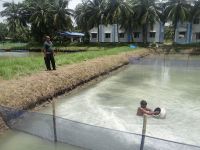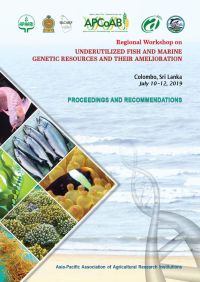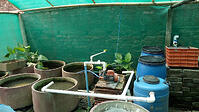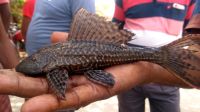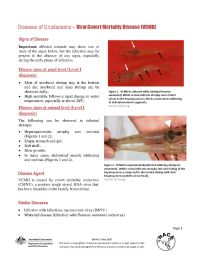The catfish Mystus gulio is a small indigenous euryhaline fish found in fresh and brackishwater environments of the Sunderban delta of Bangladesh and India. A fast-growing species with high nutritional value, market demand and hardy nature, M. gulio is a desirable candidate for aquaculture in Asia. It is co-cultured with other brackishwater species in paddy fields, but expansion of culture in pond systems has been held back because of a shortage of seed. This article reports on induced breeding techniques and the development of a farmer-friendly modular hatchery and farming system suitable for use at the homestead level or by small-scale operators.
The workshop was held from 10-12 July 2019, Colombo, Sri Lanka. The objectives of the workshop were to i) assess the current status of underutilised aquatic genetic resources at the regional level and to assess R&D status of priority species with potential for use in food and agriculture; ii) discuss knowledge gaps and regional priorities concerning underutilised genetic resources and create awareness on their role and value for diversification of food supplies and livelihoods; and iii) formulate strategies for strengthening the institutional framework for management and conservation of genetic resources at the regional level.
In pursuit of modernising fish culture practices, novel recirculatory aquaculture systems (RAS) have been introduced in semi-urban areas of West Bengal and other parts of India. While quite a few progressive fish farmers in India have adopted advanced, intensive and imported RAS systems featuring huge plant, other farmers have developed small and indigenous RAS systems that require comparatively low investment. This article discusses the design, principles, state-of-the-art and associated practical aspects of indigenous RAS technology as currently practiced in West Bengal and other places.
Loricariid catfish species of the genus Pterygoplichthys, known in the aquarium trade as 'plecos' and 'algae eaters', have extensively invaded and proliferated in the East Kolkata Wetlands in West Bengal. Loricariids have capacity to alter the ecosystem and biodiversity of invasion sites, by physically altering the invaded habitats and by competing with native animals for food and space. The aquarium trade pathway is the most significant source of loricariid introductions globally. This article discusses the invasion of loricariid catfish in the East Kolkata Wetlands, and the environmental and economic impact on local fishers.
This disease advisory describes the history, known host range, clinical signs and PCR detection methods for viral covert mortality disease (VCMD). Crustaceans currently known to be susceptible to VCMD include Penaeus vannamei, P. chinensis, P. japonicus, P. monodon, Macrobrachium rosenbergii, Procambarus clarkii, Exopalaemon carinicauda, Ocypode cordimanus, Diogenes edwardsii, Corophium sinense, Parathemisto gaudichaud and Tubuca arcuate. Fish species including Mugilogobius abei, Carassius auratus, and Paralichthys olivaceus may also be susceptible to the virus.
